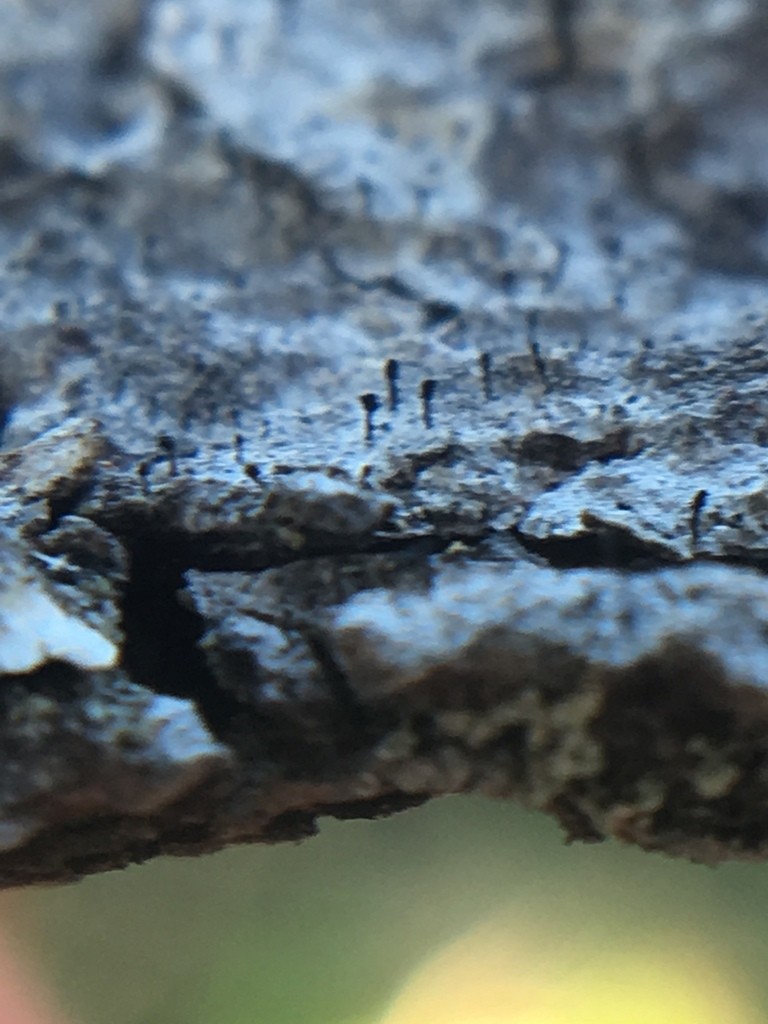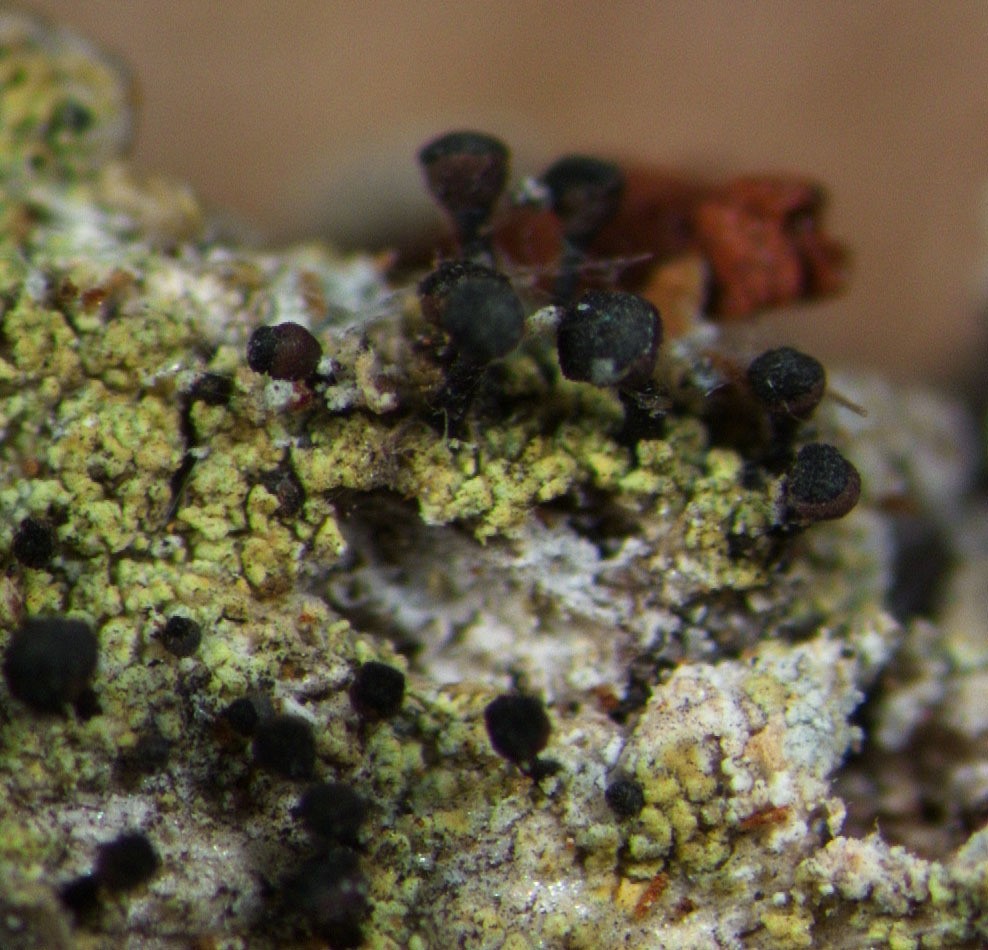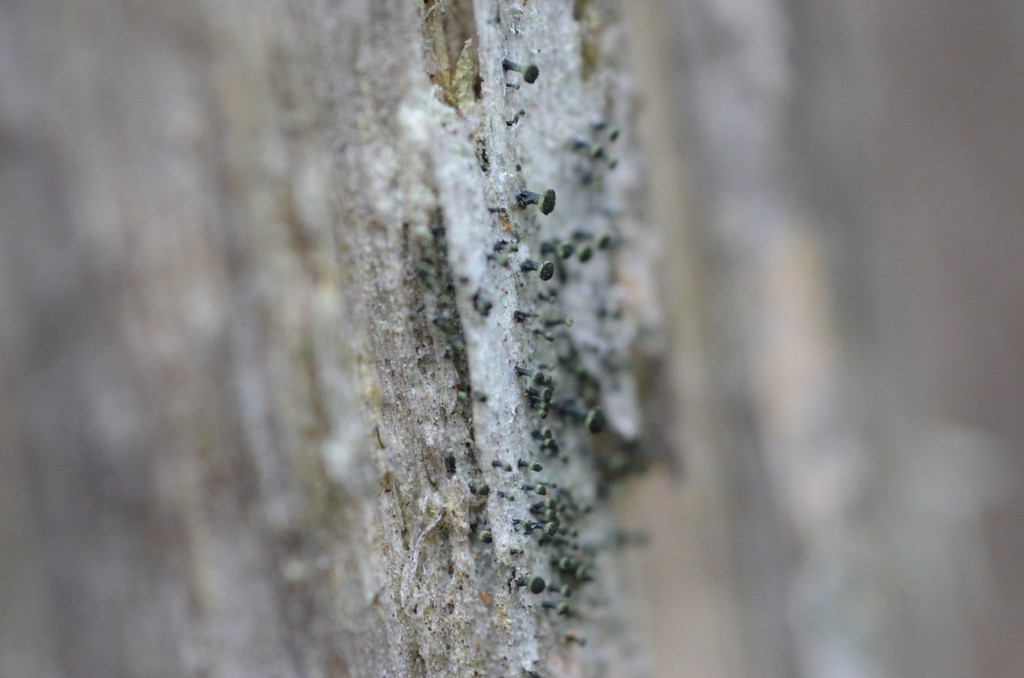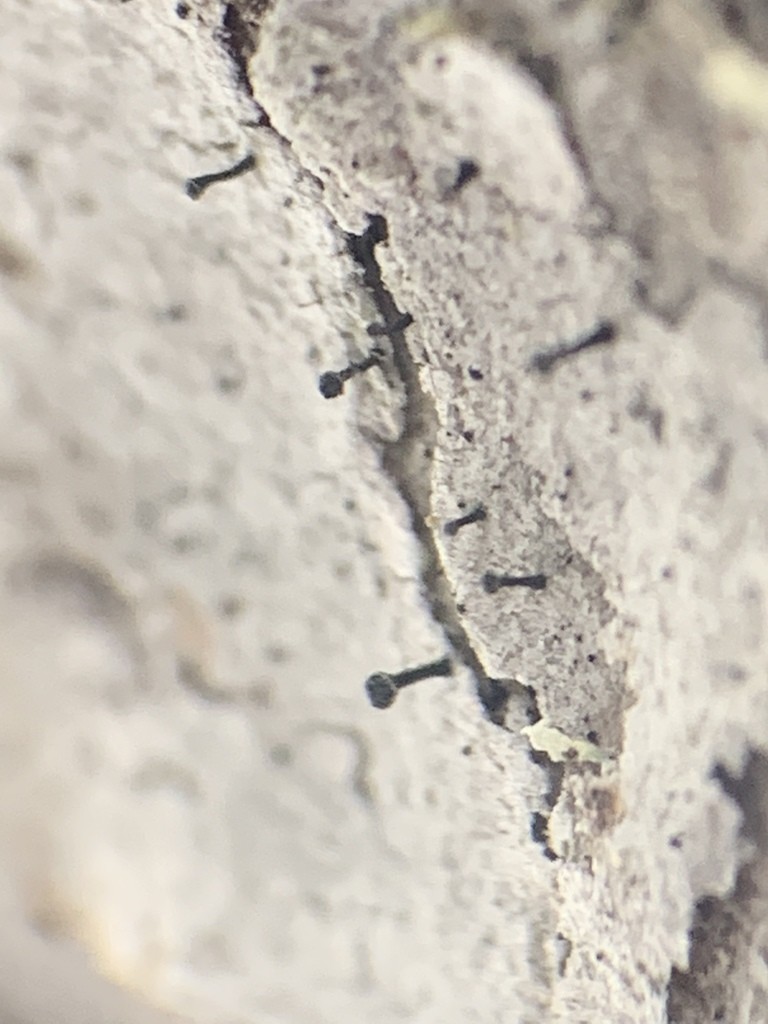Pin lichens
Scientific name: Calicium
Pin lichens
Scientific name: Calicium
 Photo By Liam O'Brien , used under CC-BY-4.0 /Cropped and compressed from original
Photo By Liam O'Brien , used under CC-BY-4.0 /Cropped and compressed from original Description
Pin lichens is a fascinating group of lichens known for their distinctive, pin-like fruiting bodies. These lichens typically grow on tree bark, wood, or rocks, usually in shaded or sheltered environments. A notable feature of pin lichens species is their slender, stalk-like structures topped with small, rounded spore-producing heads. These lichens play a vital role in nutrient cycling and contribute to the biodiversity of their habitats.


